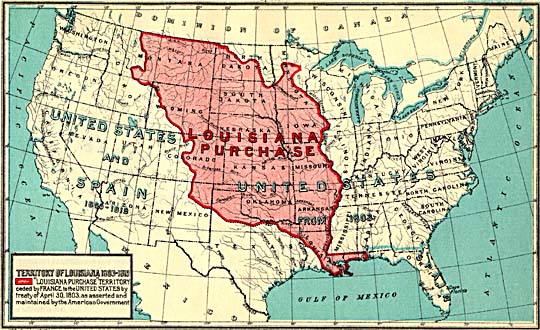 I was helping my middle schooler study for his big American History test a few days ago, which focused on westward expansion in the early nineteenth century—you know, Manifest Destiny, the Louisiana Purchase, Lewis and Clark, and including events leading to the Civil War and then the Civil War itself. (It was a big test.)
I was helping my middle schooler study for his big American History test a few days ago, which focused on westward expansion in the early nineteenth century—you know, Manifest Destiny, the Louisiana Purchase, Lewis and Clark, and including events leading to the Civil War and then the Civil War itself. (It was a big test.)
And here’s the crazy part: There was not a single mention of mosquitoes anywhere in his textbook. Not a one. I know, shocking. A huge reason Napoleon was content to punt 828,000 square miles of territory to Thomas Jefferson in 1803 was that he’d just suffered a major debacle in Haiti, losing tens of thousands of men (including his own brother in law) to mosquito-vectored malaria and yellow fever. (Of course, no one back then knew that mosquitoes transmitted these diseases.) The West Indies were a death trap for Europeans with no resistance to these diseases. He was more than happy to unload this territory—much of it nearly as pestilential as the West Indies—onto the clueless Americans for 15 million dollars, thinking he’d by far gotten the better deal, and no doubt laughed his way to la banque.
I could make this a very long blog entry, but I know that no one has time to read a lengthy exegesis about 19th-century America’s insect-vectored diseases this close to the holidays. Suffice to say, mosquitoes played a huge role during this period of our history. The cultural prejudices that were born during this time directly reflected the unbalanced malarial burdens suffered by those living above and below the Mason-Dixon line. The “hardworking,” “industrious” Northerners, who suffered relatively little malaria, considered Southerners lazy lie-abouts. In a 1785 letter, Thomas Jefferson described Southerners as “indolent,” “ unsteady,” and “fiery.” The Anopheles mosquito, the species that transmits malaria, helped create these deep cultural prejudices.
And the Civil War was “a giant malarial feast,” according to Sonia Shah in The Fever. Union troops suffered 1.3 million cases of malaria, and the mind boggles to think what the Confederate numbers must have been.